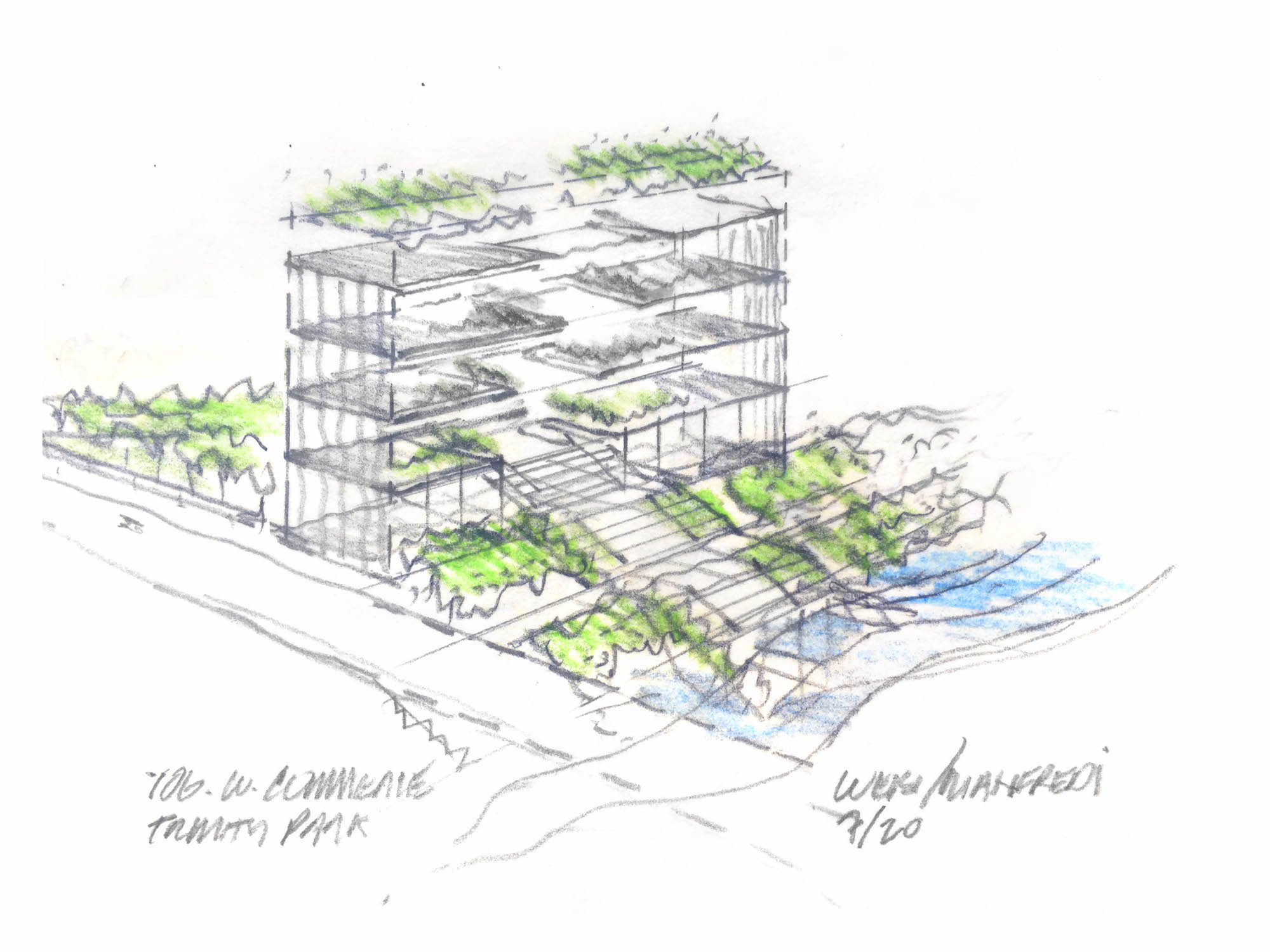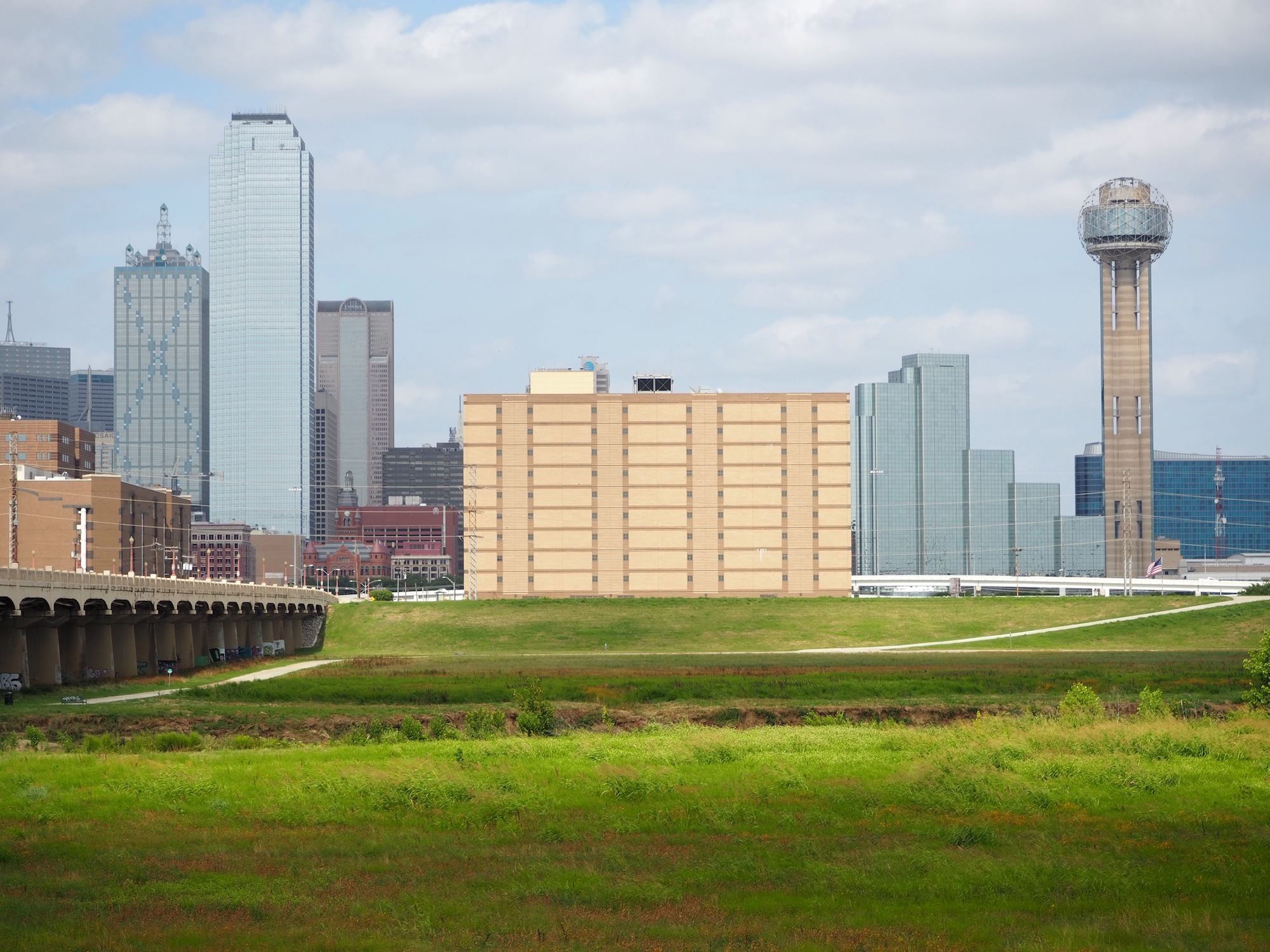The nonprofit Trinity Park Conservancy has announced that it has tapped New York City-based multidisciplinary architecture firm WEISS/MANFREDI to lead the transformation of an existing 10-story former jail at 106 Commerce West Street in downtown Dallas into an anchor for the upcoming Harold Simmons Park.
Slated to span over 200 acres alongside the basin Trinity River, the planned park designed by Brooklyn-based Michael Van Valkenburgh Associates, will, once completed, connect the city’s downtown core with its west and south sides. With an estimated $200 million price tag, the ambitious urban park project is envisioned as the first of several new parks to be nestled beside the historically underutilized waterway. Dallas-based Malone Maxwell Dennehy Architects (MMDA) will work alongside WEISS/MANFREDI on executing the adaptive reuse of the building.
The highly conspicuous, concrete panel-clad building at 106 West Commerce—recently declared as the “ugliest building in Dallas” by the Dallas Morning News—isn’t exactly an ordinary building. Completed in 1997, the structure is the former home of the Jesse R. Dawson State Jail, an infamous privately-operated facility that was shuttered in 2013 and has been vacant ever since. The Conservancy purchased the forsaken property on the east bank of the river for $3 million in May 2019 with plans to eventually integrate it into the future park as an anchoring landmark and give it a new community-benefiting purpose.

As for how exactly the old jail will be reused, that has yet to be determined although restaurants, retail, affordable housing, and administrative office space for the park have all been floated in local media as early speculative ideas. As noted in a press statement, WEISS/MANFREDI founding principals Marion Weiss and Michael Manfredi see the building’s potential as a “dynamic community destination and gateway to Harold Simmons Park.”
“The Conservancy is so pleased to choose WEISS/MANFREDI and MMDA to reimagine this building to be a magnet for drawing people from all over the city into the Park, connecting them to nature and each other,” added Deedie Rose, chair of the Conservancy’s board of directors, in the statement. “It will provide an essential part of the public health infrastructure in our city that will create jobs, stimulate economic development and provide critical green space.”
While this all sounds enticing and positive, it is short on specifics.
Those details will be formed and then formalized in the coming months via an extensive community engagement process, in which the Conservancy and the design team will sit down the local stakeholders and Dallas residents living and working within the triad of neighborhoods flanking both the future park and the old jail.

The goal, of course, is to glean opinions and ideas from members of the community on what the best reuse approach for the building should ultimately be; the needs and wants expressed during the meetings will inform the process moving forward. Those who had worked at—and been incarcerated in—the jail are encouraged to join the upcoming series of listening sessions, the first of which will be held tomorrow, August 21. Per the Conservancy, additional listening sessions seeking community input will be held as the project moves along.
WEISS/MANFREDI was selected to breathe new life into the blighted 238,000-square-foot building from a shortlist of seven teams. Following a Request for Qualifications issued by the Conservancy in early July, a total of 45 local, national, and international firms responded to the call for a “visionary architect” to overhaul the building. The firm was ultimately selected by an eight-person committee formed by the Conservancy due in part—in addition to other criteria—to its established track record working within the context of civic spaces, adaptive reuse projects, and projects requiring significant community input.











